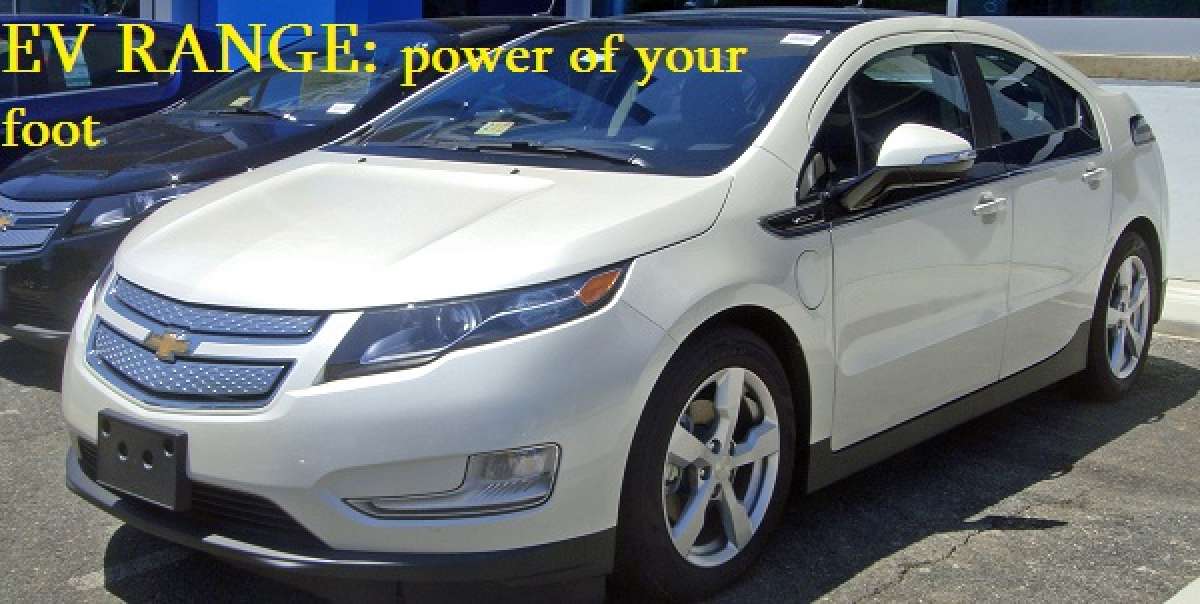A recent question on a Tesla forum inspired me to elaborate on what it takes to move your vehicle down the road. This is especially important for electric vehicles, because a smart driving style is no longer just the difference between 25 and 30 MPG at the gas pump. With an EV, it can be the difference between getting stranded and making it home with plenty of battery power to spare.
The question was: how does a Tesla Model S move a 310 kW drive motor with an 85 kWh battery? The simple answer is the difference between power and energy – 310 kW is a measure of how much power the motor can produce in the form of energy per unit time (think your 100 watt light bulb), while 85 kWh is a measure of how much energy is stored in the battery (think leaving that 100 watt light bulb on for 1 hour = 100 Wh). If you were to push the motor to 310 kW with the accelerator pedal glued the floor, your battery would last 85 kWh/310 kW = 0.27 hours, or just over 16 minutes. Definitely not 265 miles. Luckily, we don’t drive that way.
Whether electrical or liquid, the amount of fuel your vehicle consumes is directly related to the power you demand of the car. Lots of factors affect this demand: mainly vehicle aerodynamics, rolling resistance of the tires, grade (either uphill or downhill), and acceleration. These all represent forces the vehicle must overcome; the last one, vehicle acceleration, is the force you have control over. Remember that equation F = ma, the only one you remember from high school physics? The faster you accelerate, the more force is required at the wheels of your vehicle.
This is also why automakers want to build their vehicles to be as light as possible, though they’re doing a lousy job thanks to various safety and consumer-driven factors. So after totaling up all those forces mentioned earlier, multiplying by speed yields power demand, and multiplying by time (remember kW * hour = kWh?) gives you the energy required from your battery.
What does this mean? Many people don’t realize that a vehicle cruising at a constant speed actually requires very little power. It can vary widely depending on the exact speed and vehicle characteristics (in this case frontal area, drag coefficient, and tire rolling resistance coefficient), but highway driving on level ground without any acceleration only requires about 15 kW of power for an average sedan. This equates to 20 horsepower! That’s right – your motor, or engine in the case of a conventional vehicle, is vastly oversized for the boring task of highway driving.
The most efficient operating point (in miles per gallon or kWh/100 miles, a commonly used efficiency metric for EVs) for conventional vehicles is about 55 miles per hour while the different efficiency characteristics of electric motors mean the ideal speed is about 40 miles per hour, depending on the vehicle. But if you add even moderate acceleration to the equation, the energy required increases and thus the efficiency drops in a hurry.
This is one of the main reasons city driving produces such low MPG numbers for conventional vehicles; lots of acceleration and deceleration at low speeds plus some other inherent disadvantages of internal combustion engines means not a lot of bang for your buck, so to speak. But go ahead and gloat from your electric vehicle in city traffic; even if you’re heavy on the accelerator pedal, the regeneration capability plus lack of energy-wasting idle and the comparatively fantastic efficiency of electric motors means you’re doing far better than your gasoline-fueled counterparts.
So if you’re pulling up to a traffic light in your Nissan Leaf, and you’d really love to floor it at the green light to show off your instant torque for that poor testosterone-laden Corvette next to you, remember this: F = ma. If you’re worried about not having enough juice to make it home, resist the temptation and drive intelligently and your range indicator might be a little more forgiving.






Comments
OK, "Torque" News.... I have
Permalink
OK, "Torque" News.... I have to critique here:
The faster you accelerate, the more force is required at the wheels of your vehicle.
Torque is not force, just as power is not energy. Perhaps Torque News needs a refresher course...? Other than that, I agree with the premise.
Hi John, I can see why you
Permalink
Hi John, I can see why you would point that out. I was simplifying to just include the most important points. Force indeed is not torque, but the torque required at the wheels is just the force required at the wheels multiplied by the wheel radius (which obviously remains constant). As for power/energy, please see the second and fourth paragraphs for my explanation.